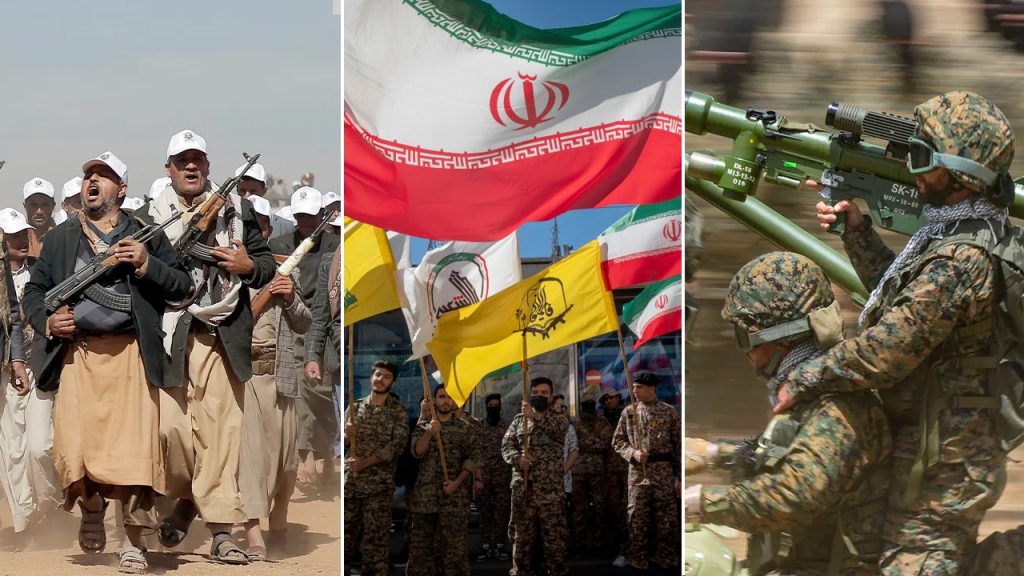For over forty years, the Iranian regime has been constructing a “Ring of Fire” around Israel, using various terror groups to extend its influence throughout the Middle East. Recent military actions taken by Israel have begun to unravel this network, potentially signaling a turning point in the ongoing conflict. Former Mossad Intelligence Directorate head Amnon Sofrin highlighted the regime’s preparations, including plans by Iran-backed militias to join forces with Hezbollah in Lebanon in the event of an IDF incursion. However, despite Israel’s presence in Lebanon, these militias have yet to act as ordered by Iran, leading to a stalemate in direct engagements.
While Iranian terror proxies have refrained from direct ground battles, they have shown support through other means. Attacks such as drones loaded with explosives launched from Iraq against an Israeli military base and an unmanned aerial vehicle from Iraq infiltrating Israeli territory demonstrate the high capabilities of pro-Iranian militias. The Popular Mobilization Forces in Iraq, consisting of Shiite militias, have emerged as Iran’s ground forces in Iraq and Syria, reinforcing Tehran’s position in the region. However, there are concerns about the increasing coordination between militias in Iraq and Houthi rebels from Yemen, potentially leading to broader attacks on Israel and American forces in the region.
In Syria, Iranian-guided brigades such as the Fatemiyoun Brigade, Liwa’ Zaynabiyun, and Imam Ali operate with fighters from various countries, receiving monthly payments for their service. These militias play a crucial role in facilitating the arms corridor from Iran and operating as a logistical hub for weapons transfers. Despite the Iranian regime’s exploitation of individuals in failed states, such as criminals or family members of kidnapped individuals, the militias in Syria have not engaged in direct combat but rather serve Iran’s broader strategic interests. Israel has launched military strikes to disrupt weapons transfers at key border crossings, indicating a shift in strategy to prevent these arms networks from operating unimpeded.
As Israel intensifies its military operations against Iranian proxies, the potential for escalated hostilities remains high. The hesitation of these groups to act without direct orders from Iran complicates the situation, creating uncertainty in the region. The imminent winter season may present operational challenges in Lebanon, limiting Israel’s military responses. However, former senior director of Israel’s National Security Council Avner Golov emphasizes the importance of dismantling the Iranian axis and sending a clear message to Bashar al-Assad to reconsider his alliances with Iran. Golov believes that pressuring Assad to distance himself from Iran could disrupt the broader Iranian strategy in the region.
Looking ahead, the Iranian “Ring of Fire” faces unprecedented challenges as Israeli military actions disrupt the regime’s influence networks. The necessity to maintain pressure on Iranian proxies to prevent them from regrouping is critical to changing the equation in the Middle East. With ongoing tensions and the potential for sporadic attacks against American forces, the region remains volatile. Sofrin underscores the importance of continued efforts to dismantle the Iranian network and prevent further aggression, highlighting the need for strategic actions to counter Iran’s destabilizing activities. By targeting key nodes in the Iranian network and sending clear messages to allies like Assad, Israel aims to disrupt Iran’s regional ambitions and maintain security in the Middle East.


